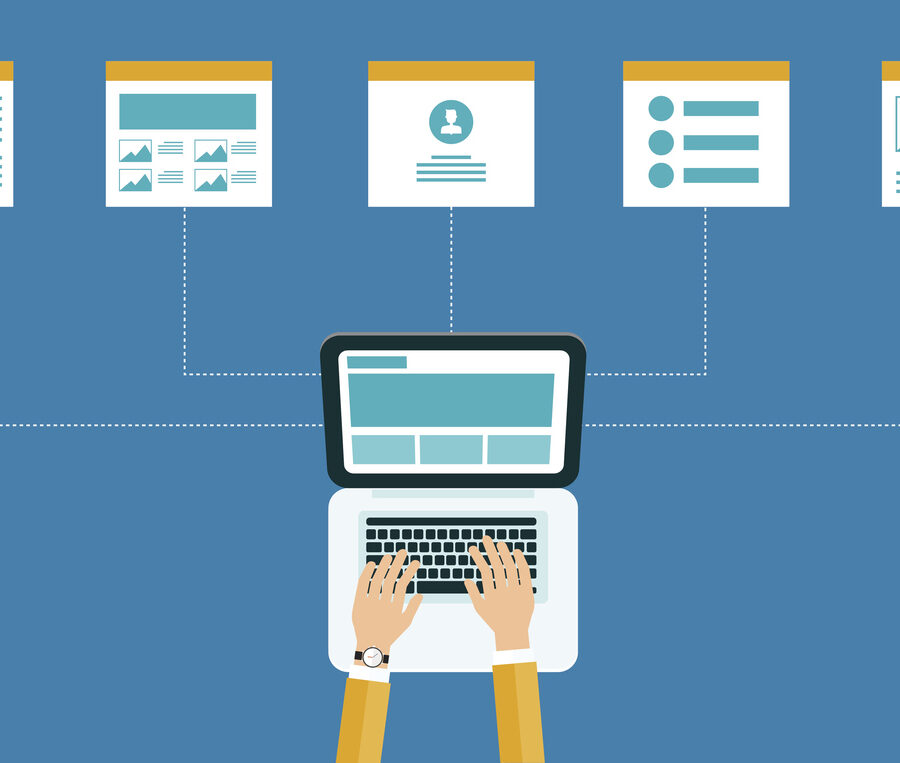
12.01.17
Homepages Vs. Landing Pages
Much is made of whether you should choose to direct traffic to a homepage or their more direct, straight talking cousins, landing pages. Depending on your business, objectives and the situation, the choice will vary.
In simple terms, a homepage, although focused on a defined set of users and designed to act as the start of a users journey, allows visitors to explore a website, find information, navigate around – meeting their needs and providing the required information as they explore.
In contrast, landing pages don’t mess about. They’ve got one job to do and they are designed to do it. No exploring, no navigating around. They are scientifically designed to give the user exactly what they want (and of course, get you exactly what you want). Right there, right then.
Let’s explore the difference and why you’d consider these different approaches to support your digital marketing activity and campaigns.
Homepages
When visitors land on a homepage or web page they’re likely to have arrived via one of a number of sources. Whether that be search engines, social media or external links, this is where they’ll soon decide (10 seconds or less according to Google and Microsoft) if this is the website and business for them.
Its purpose is wide ranging, portraying the business’ services, brand image, contact information and much more.
Visitors need to understand what you do and how you could help them. This is your chance to show how you’re different from all your competitors and how you’ve helped other people like them. This is why homepages are crucial to inbound marketing efforts and critical to delivering improvements and results.

Whether this be the homepage or just a general web page, the aim here is to inform visitors much more generally, linking to further information and allowing easy navigation to other pages.
While this is great for visitors to begin to understand your brand and potentially reach other important pages, it’s not ideal for specific acts or purposes.
This is where landing pages come in.
Landing Pages
Landing pages, by contrast, are simple and straight to the point web pages that have one single goal or purpose, usually to convert site visitors into leads.
More often than not this is done through visitors reaching a landing page which features targeted content, where they then provide key contact data (name, email and telephone). In return, they’ll usually receive further information or offers via email, ebook download or a physical item, before being dropped into a cleverly designed automated marketing workflow and redirected back onto the main website for additional supporting information, case studies and support.
Landing pages typically have much higher conversion rates than more general web pages. This is due to them not typically being found by accident, instead usually found by clicking a call to action on a separate page or post.
One of the significant advantages of landing pages is they are direct response and action based, allowing effective measurement and tracking.
Here, businesses can receive an actual return on investment; such as a cost of £0.54 per e-book download (key contact data received). The alternative here is reporting on metrics that are valid, but not as tightly aligned to real business goals.

Landing pages are often used as part of paid campaigns (PPC, Social Advertising) to drive conversions rather than landing targeted users on ‘generic’ website content pages. Due to how targeted to a call to action (CTA) a landing page is, and the fact that it has one defined definition of ‘success’ such as ‘download’, it is then possible to deploy and optimise adverts around this.
Landing pages can be the golden ticket to gathering that all-important customer data to feed into the ever-hungry new business pipeline. A new qualified lead, with keen interest in that relevant service area, with all the contact information needed to follow up. Yes please.
In terms of design and features, landing pages normally don’t have a full header and footer area. As people will have landed on the page with the intention of doing a particular action, it doesn’t make sense to facilitate an exit away from the page, that’s not the path we want them to follow.
Similarly, the landing page should be designed and developed to focus on a CTA led approach driving users to download, sign up or take up the offer. These are usually presented in the form of buttons, and should consists of short and direct actions such as ‘sign up now’ or ‘download’.
Content should be informative but focused, with testimonials or quotes also common place.
Images should be appealing and confirm what visitors will receive from signing up or downloading. If the offer visitors are receiving is an asset such as an eBook, report or product, show it! Some offers may be less straight forward such as services or consultations, in this case, use an image that’s friendly and features visual clues. Videos can also act as a great queue for visitors, offering further information in an appealing and direct way.
So, by breaking down the role of a homepage vs a landing page, we’ve hopefully got you thinking about which may work best for you based on the objectives of your digital marketing activity. Of course, we’re always here to offer a helping hand if you need to explore the business case and best approach for your business.
Join the conversation on Twitter by tweeting @better_studio. We’d love to hear your experiences of homepages and landing pages and which you think are best!
Want to know more about landing pages and how our Web Development and Digital Marketing teams can help you? Get in touch today on 01642 989158 or drop us an email.
